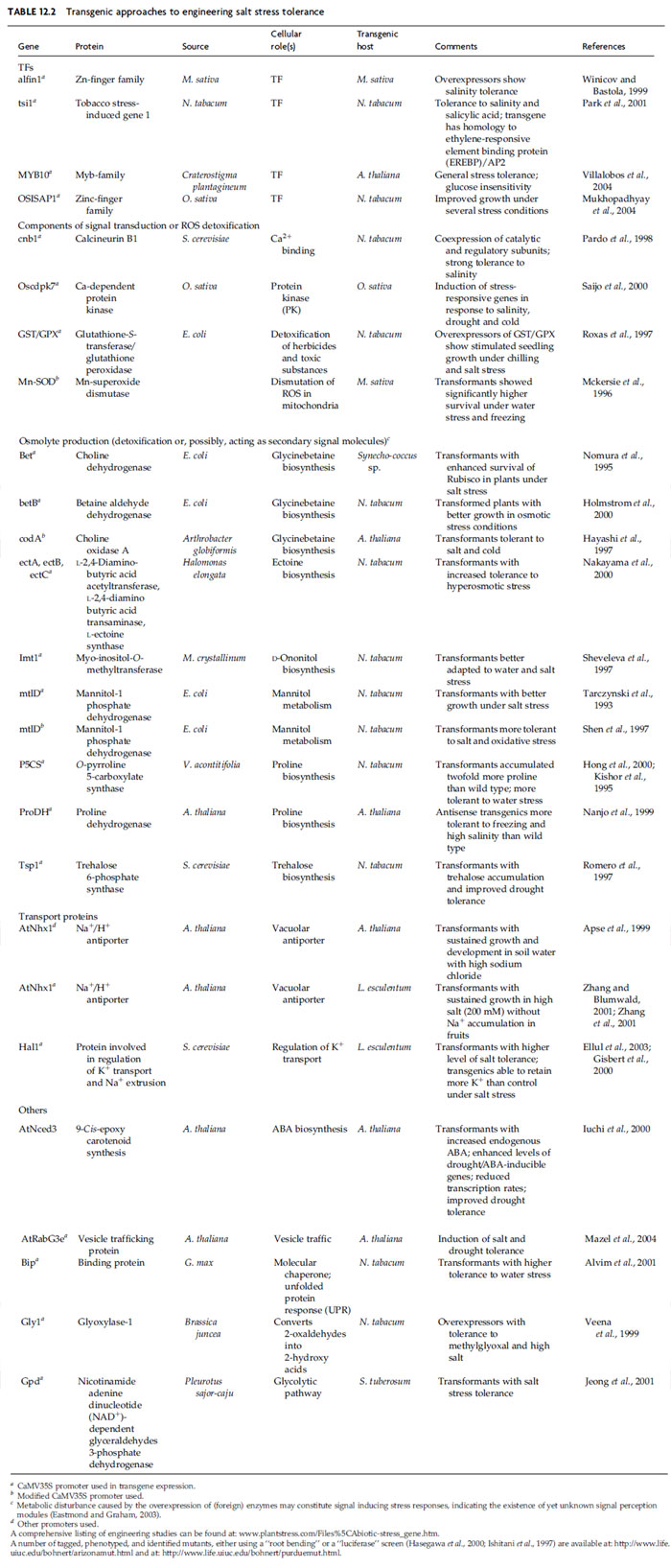Molecular Biology of Plant Pathways / Genetic Engineering for Salinity Stress Tolerance
Strategies to Improve Salt Tolerance by Modulating Metabolic Adjustments
Many plant species or ecotypes of species, most conspicuously salt-tolerant
species, alter the intracellular osmotic potential when salt stressed, and this has
given rise to the concept of ‘‘osmotic adjustment,’’ which, although not unchallenged,
has become a widely accepted concept (Bohnert and Shen, 1999; Rontein
et al., 2002). The increase of metabolically inert compounds would provide both a
sink for unutilized products of primary metabolism and assure continued water
influx into the plant. The topic has received much attention and has been
reviewed extensively (Apse and Blumwald, 2002; Hasegawa
et al., 2000b; Hill
et al., 2004; Hohmann, 2002; Knight
et al., 1997; Verslues and Bray, 2004). The
concept is based on many observations demonstrating the accumulation of a
number of metabolites that are normally present in low concentrations in response
to an osmotic or ionic imbalance. As the determinants that control entire (metabolic)
pathways have emerged, engineering has moved to altering expression of
transcription factors (TFs), and components of calcium-dependent responses that
elicit phospho-relay regulatory systems that respond to signals caused by various
abiotic stresses (Table 12.2) (Himmelbach
et al., 2003; Qi and Spalding, 2004;
Serrano
et al., 1999; Shinozaki
et al., 2003; Teige
et al., 2004; Zhu, 2003).

